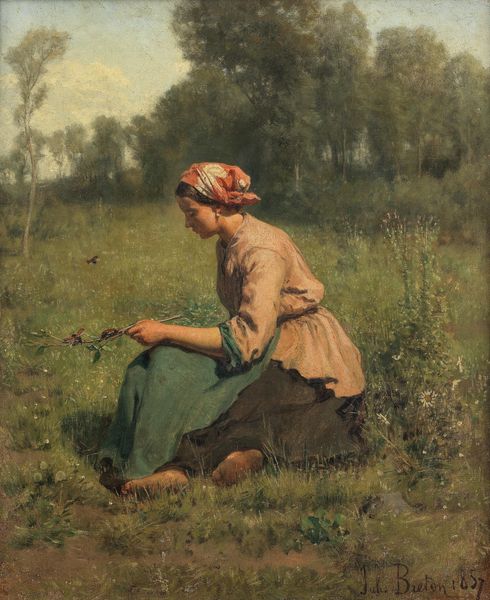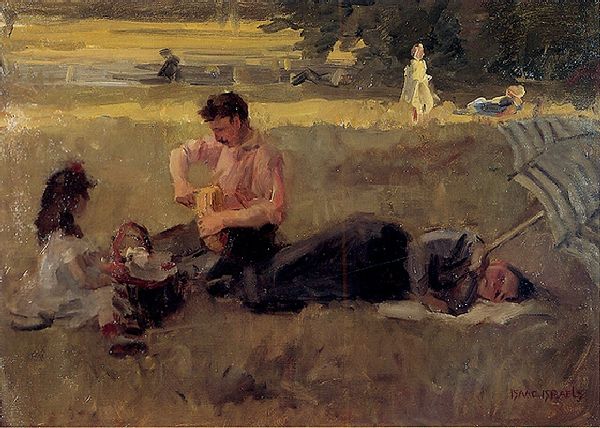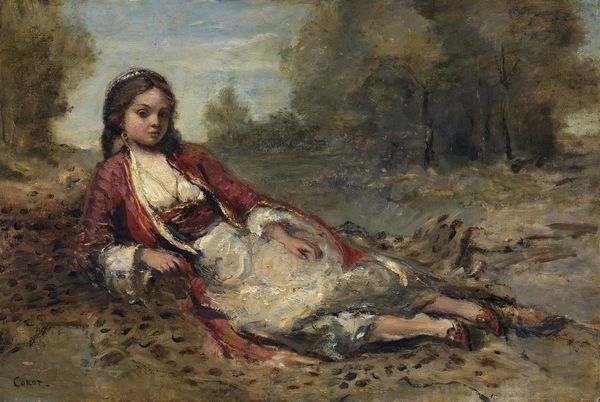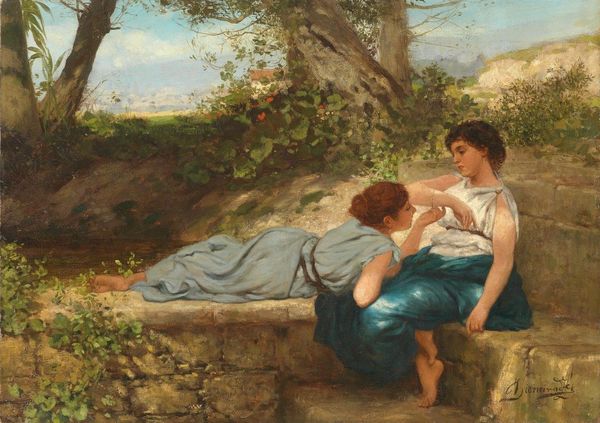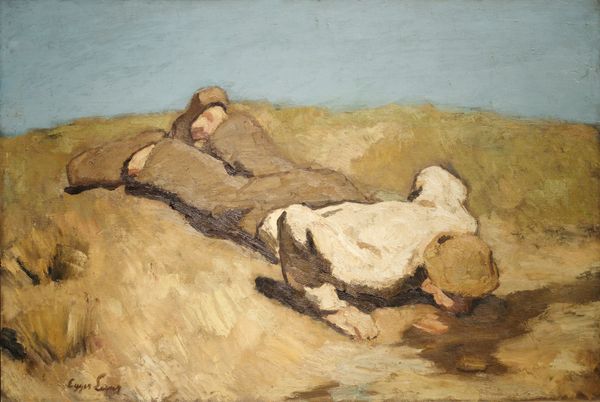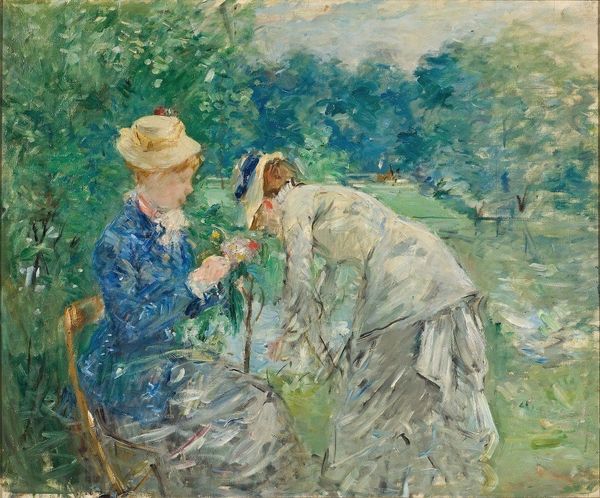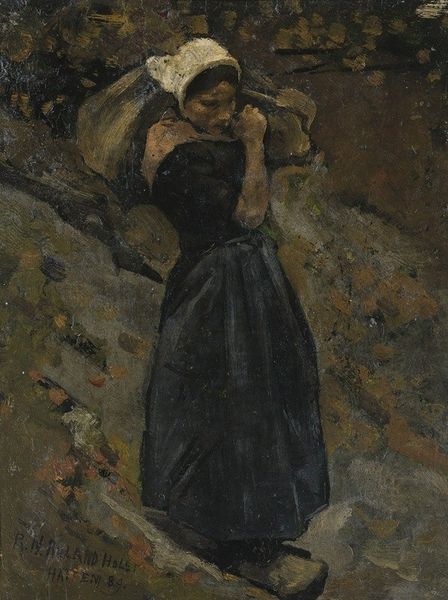
painting, oil-paint
#
portrait
#
gouache
#
painting
#
impressionism
#
oil-paint
#
oil painting
#
genre-painting
#
portrait art
#
realism
Copyright: Public domain
Curator: This is Jules Bastien-Lepage's "Resting Country People," painted in 1877. It's oil on canvas and resides here at the Kunsthalle Hamburg. What strikes you first about it? Editor: There's a quiet melancholy in it. The way the woman is sitting, her gaze directed away, and the somewhat faded color palette evoke a sense of weariness or resignation. The scene almost feels like a lull before some type of pending event. Curator: That resonates with the social commentary often attributed to Bastien-Lepage. Considering it was the late 19th century, the materials alone speak of societal structures—oil paint itself became more commercially available, impacting production methods and creating a new market for genre scenes depicting everyday rural life, much like this one. How does that influence the image you're interpreting? Editor: The iconography becomes richer. Her averted gaze, coupled with the resting figure behind her, may indicate not just personal weariness but broader concerns with land, labour and its impacts on rural society at that moment in French history. Are those resting because they are exhausted from a hard day's labor or are they resting because they have nothing else to do? There are no tools or products of their labour in sight to make a sure distinction between these scenarios. Curator: Precisely. Bastien-Lepage doesn't romanticize rural labor, though some debate whether he fairly represents it. Examining the canvas itself, the visible brushstrokes remind us of the physical act of its creation; an implicit recognition of artistic labor alongside its subject matter. The earth tones are laid bare for us to engage with directly, as much as the image of the rural workers that is meant to capture our imagination. Editor: The symbolism of rest, in particular, feels central. This kind of 'stilled' moment may represent a psychological desire of what life might be like *outside* of labouring, the mental quietude available during and after toil. I wonder too how different people saw in this work various things about France and how those meanings evolved through the twentieth century and our own moment today. Curator: Indeed, a layered artwork offering visual respite, symbolic depth, and historical insight into material conditions. Editor: A reflective piece about labor and its toll on the land and mind that speaks as loudly today as it did in 1877.
Comments
No comments
Be the first to comment and join the conversation on the ultimate creative platform.

